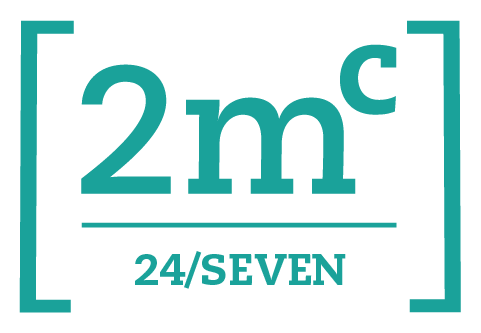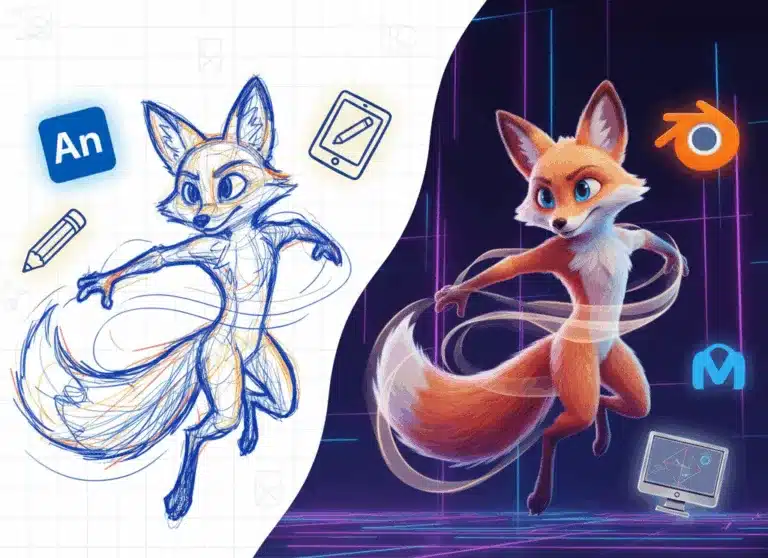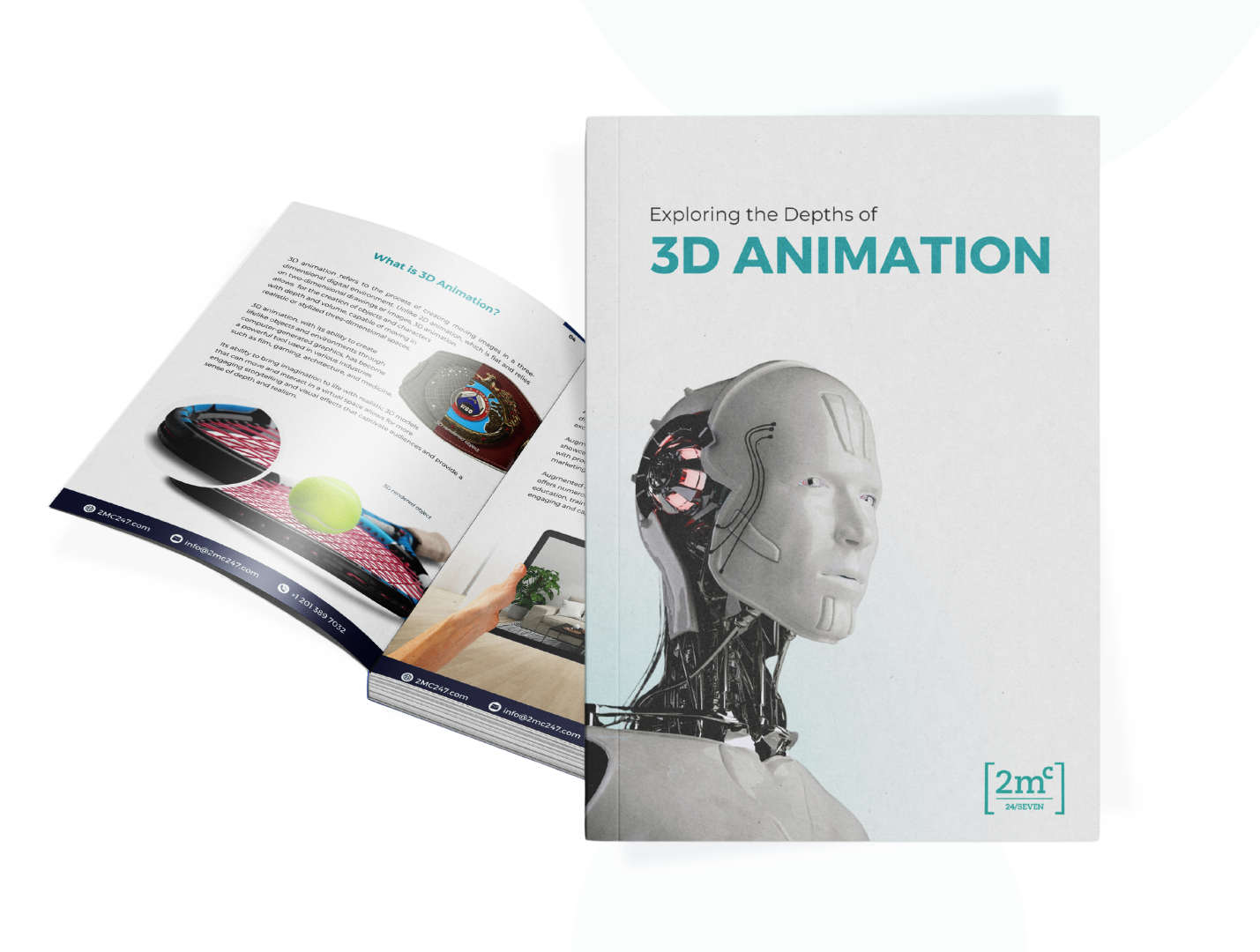What are motion graphics? When it comes to visual storytelling, motion graphics stand as essential tools that guide us through captivating videos and animations. They’ve evolved over time, becoming a powerful force to convey information across various media.
Thanks to digital technology, motion graphics have expanded their reach and potential. They play a crucial role in film and television credits, advertising campaigns, social media content, and website design. They’ve become indispensable tools for storytellers across a wide range of industries.
Join us on this journey as we explore the transformative power of motion graphics and uncover the secrets behind their effectiveness.
What are Motion Graphics, Really?

Motion graphics are a form of visual design that combines text and design elements with movement, often used in various industries such as film, advertising, and website UX design. They provide a dynamic way to convey information and engage audiences.
In motion graphics design, the focus is on creating visually appealing animations that effectively communicate a message or tell a story.
Motion designers use their creativity and technical skills to manipulate typography, illustrations, icons, and other graphical elements to create engaging visuals. They carefully consider factors such as timing, pacing, transitions, and color schemes to ensure that the motion graphic captures the viewer’s attention and conveys the intended message.
Motion graphics designers play a crucial role in these industries by utilizing their expertise in graphics animation techniques to create visually stunning animations that captivate viewers and enhance the overall visual experience.
What is the Purpose of Motion Graphics
Motion graphics are a way to connect with viewers and enhance storytelling. When combined with great music and effective copy, they convey powerful messages. We use them for creating ads, movie title sequences, explainer videos, and sharing information.
What are Motion Graphics used for?
Motion graphics have become increasingly popular in recent years due to their versatility and effectiveness in capturing audience attention. They are commonly used in film opening credits to set the tone for the movie, in advertising campaigns to promote products or services in an engaging way, and in website UX design to create seamless user experiences.
Advertising and Marketing

Advertising and marketing have greatly benefited from the use of motion graphics, as they provide a visually captivating way to engage audiences and effectively convey brand messages. Motion graphics have become a popular choice for advertising campaigns due to their ability to grab attention and create a memorable impact.
Here are three ways in which motion graphics are used in advertising and marketing:
Whether it’s showcasing company milestones, introducing team members, or presenting data-driven information, motion graphics can add an extra layer of creativity and professionalism to branding videos.
Overall, motion graphics have revolutionized the advertising and marketing industry by providing creative solutions that capture audience attention quickly.
Incorporating animation into these sectors has opened up new possibilities for brands to communicate their message effectively. With their visually captivating nature, motion graphics continue to play an integral role in advertising campaigns across various platforms.
TV Title Sequences

TV title sequences have become an integral part of the television viewing experience, captivating audiences with visually stunning designs that set the tone for the upcoming show. These title sequences often incorporate motion graphics to create dynamic and engaging visuals.
Motion graphics in TV title sequences have a rich history, evolving alongside advancements in technology and design. In the early days of television, title sequences were relatively simple, consisting of static images accompanied by music or voice overs.
However, with the advent of digital technology and the rise of motion graphics, TV title sequences have transformed into elaborate works of art.
Designers now have access to powerful software that allows them to bring their creative visions to life through animation and visual effects. The techniques used in creating TV title sequences vary depending on the desired aesthetic and narrative goals.
Some designers opt for sleek and minimalist designs with smooth transitions between elements, while others embrace a more chaotic and energetic style with rapid movements and vibrant colors.
Motion graphics techniques such as typography animation, 3D modeling, particle simulations, and compositing are commonly employed to create captivating visuals that leave a lasting impression on viewers.
Explainer Videos
The use of explainer videos has become increasingly prevalent in various industries as an effective means of conveying complex information in a visually engaging and easily understandable manner. Explainer videos utilize motion graphics to simplify concepts, making them more accessible to a wide range of audiences.
These videos often combine animation, typography, and other visual elements to create a cohesive narrative that guides viewers through the subject matter.
In terms of history, explainer videos have evolved alongside the development of motion graphics.
As technology advanced, motion designers began incorporating animated visuals into their work, resulting in the creation of explainer videos. The techniques used in these videos vary depending on the desired outcome and style. Some common techniques include character animation, infographics, kinetic typography, and whiteboard animations.
Explainer videos have found applications in numerous fields such as education, marketing, healthcare, and technology.
In education, they are used to simplify complex topics for students and enhance learning experiences. In marketing, explainer videos are utilized to promote products or services by effectively demonstrating their features or benefits.
Healthcare professionals employ explainer videos to educate patients about medical procedures or conditions in a clear and concise manner. Furthermore, technology companies often utilize explainer videos to introduce new software or explain how certain technologies work.
Overall, explainer videos have become an integral part of communication strategies due to their ability to distill complicated ideas into visually appealing and easily digestible content.
Informational Graphics
Informational graphics have emerged as a visually impactful method of presenting complex data and statistics in a concise and easily understandable format.
In the realm of motion graphics, informational graphics play a crucial role in conveying information to audiences in an engaging way. These graphics combine elements such as typography, charts, graphs, and icons to effectively communicate data-driven messages.
The history of informational graphics can be traced back to early forms of data visualization, such as maps and diagrams. However, with the advent of digital technology and motion graphics software, designers now have more tools at their disposal to create visually stunning and informative graphics.
Techniques like kinetic typography, where text is animated to enhance comprehension, are commonly used in informational graphics. Additionally, the use of motion tracking allows for seamless integration of graphical elements with real-world footage or live-action scenes.
In terms of applications, informational motion graphics can be found across various industries including marketing, education, journalism, and healthcare. They are often used in explainer videos to simplify complex concepts or processes for viewers.
For example, in healthcare settings, these graphics can be used to illustrate medical procedures or educate patients on health-related topics. In journalism, they are employed to present statistical data or visualize trends in a captivating manner.
Through the combination of visual design principles and animation techniques, informational graphics not only simplify complex information but also enhance audience understanding and retention.
UI and UX Design

Motion graphics play a pivotal role in the world of User Interface (UI) and User Experience (UX) design, enhancing digital interactions, and captivating users with dynamic visual elements.
Its application in UI/UX is not merely aesthetic but also functional, as it contributes to the overall usability and engagement of a digital product.
First and foremost, motion graphics are used to guide users through an interface. Elements like animated arrows, swiping gestures, or interactive tooltips can help users understand the navigation and functionality of a website or app. These subtle animations guide users in their journey, reducing confusion and promoting a smooth UX.
Another critical role of motion graphics in UI/UX is feedback.
When users interact with an interface, they need to receive immediate feedback to confirm their actions. Motion graphics, such as button presses or transitions, create visual feedback, reassuring users that their actions are registered, and the system is responding as expected. This real-time responsiveness is essential for a positive user experience.
Moreover, motion graphics breathe life into static elements, making UIs more engaging. They can transform a static button into an inviting, interactive element. For instance, a ‘like’ button that animates when clicked adds an element of delight and engagement, enriching the UX.
Transitions are another key aspect of motion graphics in UI/UX. Smooth transitions between different screens or elements can make the user’s journey seamless. Whether it’s a subtle fade-in, a sliding effect, or a well-timed zoom, transitions contribute to a cohesive and visually appealing user experience.
Storytelling is not limited to literature or film. UI/UX designers also use motion graphics to tell a story. For instance, when a user progresses through a multi-step process, a well-crafted animation can narrate the steps, providing context and making the journey more engaging and understandable.
In addition, motion graphics can communicate hierarchy and priority. Through subtle animations and micro-interactions, designers can draw the user’s attention to specific elements or information. This not only aids in comprehension but also ensures that users focus on what’s most important, enhancing the overall usability.
Lastly, motion graphics can evoke emotions. They can set the tone and atmosphere of an interface, making it feel lively, playful, or serious, depending on the brand’s or product’s personality. This emotional connection between users and the interface can significantly impact their overall satisfaction and engagement..
In conclusion, motion graphics are a dynamic tool in the UI/UX designer’s kit. When applied strategically, they improve navigation, provide feedback, enhance engagement, and create memorable user experiences.
With their ability to guide, engage, and communicate, motion graphics are an indispensable asset in modern UI/UX design, ensuring that users not only interact with digital products but truly enjoy the experience.
Storytelling & Entertainment
Storytelling is a fundamental aspect of motion graphics, allowing designers to captivate audiences with visually engaging narratives that convey complex information in a compelling and accessible manner.
Motion graphics provide a unique opportunity for designers to combine elements like typography, illustrations, and animations to create immersive storytelling experiences. Through the use of motion, designers can bring static designs to life, adding depth and movement that enhances the overall narrative.
In the realm of entertainment, motion graphics have been used in various mediums such as film, television, and online platforms. In films, motion graphics are often utilized in opening credits sequences to set the tone and introduce key themes or characters. These sequences not only serve a functional purpose by providing necessary information but also contribute to the overall aesthetic and visual experience of the film.
In television shows, motion graphics are commonly employed in title sequences to establish the show’s brand identity and create anticipation for what’s to come. Online platforms like social media also utilize motion graphics as short snippets or memes to entertain and engage users.
Overall, storytelling is an integral part of motion graphics as it allows designers to convey information in a visually appealing way while keeping audiences entertained. By combining design elements with movement, motion graphics enable designers to create captivating narratives that leave a lasting impact on viewers.
Whether it’s through film credits, television intros, or online content, storytelling remains at the core of motion graphic design.
Architectural Visualization

In architectural visualization, motion graphics offer numerous benefits.
They provide a realistic representation of how a building or space will look and function once completed. This allows clients to better understand the design concept and make informed decisions.
Additionally, motion graphics can highlight specific features or details of a project that may be difficult to convey through still images or traditional drawings. The use of animation techniques such as camera fly-throughs, animated diagrams, and simulated interactions with the environment can create a more engaging experience for viewers.
To illustrate the potential applications of motion graphics in architectural visualization, here are three examples:
By harnessing the power of motion graphics in architectural visualization, designers have an innovative tool at their disposal to communicate complex ideas effectively and engage their audience on a deeper level.
Social Media Content
Social media platforms have become a vibrant playground for creative minds to craft visually captivating and engaging content that captures the attention of users scrolling through their feeds.
Motion graphics, with their dynamic and eye-catching design elements, have found a perfect home with social media.
Graphic designers and motion graphic artists use their skills to create stunning visuals that not only entertain but also convey important messages. They utilize various techniques such as typography, animation, and visual effects to bring static images to life.
One of the key applications of motion graphics on social media is in creating awareness videos. These videos are designed to educate and inform viewers about important topics or causes in an engaging way.
By combining compelling visuals with concise messaging, motion graphics can effectively communicate complex subjects and capture the viewer’s attention within seconds.
Whether it’s explaining the impact of climate change, raising awareness about mental health issues, or promoting social justice movements, motion graphics provide a powerful tool for spreading information on social media platforms.
Historical Evolution: Origins of Motion Graphics

The roots of motion graphics can be traced back to the early days of computer graphics and animation, where pioneers like Saul Bass and Elaine Bass began shaping the vibrant and creative landscape that would later define this visual medium.
In the mid-20th century, designers such as Saul Bass revolutionized motion graphics with their innovative and colorful designs. These early motion graphic artists used a combination of artistry and technology to create visually captivating animations that were often featured in film credits.
Additionally, advancements in digital technology, such as the introduction of the Apple Mac in the 1980s, further propelled the evolution of motion graphics.
As digital tools became more accessible, software like Adobe Premiere and Adobe After Effects allowed for even greater creative possibilities in motion graphics design. This led to an expansion of its applications beyond film credits, with motion graphics being utilized in various industries including advertising, news broadcasting, social media memes, website UX design, and retail experiences.
The historical evolution of motion graphics has been marked by continuous innovation and adaptation to new technologies. Today, it continues to evolve and find new ways to engage audiences through captivating animations that blend artistry with technological advancements.
The Digital Age of Motion Graphics
Today motion graphic designers have access to a wide range of tools and techniques that allow them to create dynamic and visually stunning animations.
Specialized software for the creation of motion graphics have become a standard in the industry, providing designers with powerful features for creating complex motion graphics. Techniques such as keyframing, masking, and 3D animation enable designers to bring their creative visions to life.
The applications of motion graphics in the digital age are vast and diverse. They play a significant role in advertising campaigns by grabbing viewers’ attention and conveying information in a concise and engaging manner.
They are also widely used on social media platforms to create eye-catching content that stands out in users’ feeds. Additionally, motion graphics are utilized in website design to enhance user experience and guide visitors through interactive interfaces.
With their ability to combine text, imagery, and movement into compelling visuals, motion graphics continue to evolve alongside technological advancements, offering endless possibilities for creative expression in the digital age.
What Tools Do Motion Graphic Designers Use?
Motion graphic designers utilize a range of software and tools to create visually captivating and dynamic animations. One of the most widely used software in the industry is Adobe After Effects, which offers a comprehensive set of tools for creating motion graphics. This software allows designers to combine text, images, and other design elements with movement to create engaging motion graphic videos.
It provides features like keyframing, which enables smooth transitions between different states of an animation, as well as various effects and plugins that can enhance the visual impact of the graphics video.
In addition to After Effects, motion graphic designers also make use of other software such as Adobe Premiere Pro for editing and compositing their motion graphics. This software allows them to refine their animations and integrate them seamlessly into larger video projects.
Other popular tools include Cinema 4D for creating 3D motion graphics, Illustrator for vector-based design elements, and Photoshop for image editing and manipulation. These tools provide motion graphic designers with the flexibility and versatility they need to bring their creative visions to life in product videos or any other project they are working on.
How to Create Motion Graphics

Creating captivating and dynamic visual animations requires a combination of artistic creativity, technical skills, and the utilization of specialized software tools.
To create motion graphics, designers typically start with a storyboard or concept that outlines the key ideas and visuals they want to communicate. They then use software such as Adobe After Effects or Cinema 4D to bring their ideas to life.
One technique commonly used in motion graphics is keyframing, where designers set specific points in time for certain elements to change position, scale, color, or opacity. This allows for smooth transitions and precise control over the movement of objects on screen.
Another technique is the use of effects and plug-ins to add depth, texture, and visual interest. These tools enable motion graphic designers to experiment with different styles and aesthetics.
In addition to software tools, motion graphic designers often rely on their understanding of design principles such as composition, color theory, and typography. They consider factors like hierarchy, contrast, balance, and readability when creating visuals that effectively convey information.
By combining technical expertise with artistic vision and design principles, motion graphic designers can create visually compelling animations that engage audiences and enhance storytelling.
In conclusion, motion graphics are a powerful medium for conveying information in an engaging way. They combine artistic creativity with technical skills and utilize specialized software tools like Adobe After Effects. The process involves storyboarding, keyframing, effects, and plug-ins. Designers also draw upon their knowledge of design principles such as composition, color theory, and typography. Through this combination, the resulting animations can captivate audiences while effectively communicating complex concepts or narratives, making them a powerful tool for storytelling and visual communication.
Additionally, designers may also incorporate audio elements such as music and sound effects to enhance the overall impact of the animation.
Motion Graphics for Marketing and Branding
Motion graphics play a crucial role in marketing and branding by capturing the attention of audiences and conveying information effectively. They are used to create visually appealing and engaging content that helps brands stand out from their competitors.
Additionally, motion graphics assist in building brand identity by incorporating consistent design elements and messaging, which helps establish brand recognition and loyalty among consumers.
Role in Advertising and Marketing
Motion graphics play a crucial role in advertising and marketing campaigns, captivating audiences with visually appealing animations that effectively communicate key messages about products and services. Here are three ways in which motion graphics contribute to the success of advertising and marketing efforts:
The dynamic nature of motion graphics instantly grabs viewers’ attention, making them more likely to engage with the content and absorb the intended message.
By breaking down intricate information into digestible visuals, motion graphics make it easier for viewers to understand and retain essential details about products or services being promoted.
Motion graphics have become an indispensable tool in advertising and marketing due to their ability to captivate audiences, simplify complex concepts, and enhance branding efforts.
As technology continues to advance and consumer expectations evolve, motion graphics will continue to play a vital role in engaging customers and driving conversions through innovative visual storytelling techniques.
Building Brand Identity
Developing a strong brand identity involves utilizing motion graphics to establish a consistent visual language, incorporating elements such as logos, colors, typography, and imagery that resonate with the target audience.
Motion graphics have become an essential tool for companies in building their brand image and communicating their values effectively. By employing motion graphics techniques, brands can create visually appealing and dynamic content that captures the attention of viewers and leaves a lasting impression.
One of the key advantages of using motion graphics in branding is the ability to convey complex ideas or messages in a simplified and engaging manner.
Through carefully crafted animations, brands can tell their story, showcase product features, or explain intricate concepts effortlessly. This not only helps in capturing the audience’s attention but also enhances comprehension and retention of information.
Moreover, motion graphics allow for customization and personalization by incorporating specific elements that align with the brand’s identity. For example, using unique animated logos or animated typography can help reinforce brand recognition and make it more memorable for consumers.
Motion graphics play a crucial role in building brand identity by providing a visually captivating way to communicate with audiences.
By incorporating various design elements and techniques into their motion graphic content, brands can establish consistency across different platforms while effectively conveying their message.
The creative use of animation not only grabs attention but also helps create an emotional connection between the brand and its target audience.
Motion Graphics in Media
The integration of motion graphics in various forms of media has revolutionized storytelling and visual communication, enhancing experiences in film, television, advertising, and digital platforms. Motion graphics have become an essential tool for capturing viewers’ attention and conveying complex information in an engaging and visually appealing manner.
In Television, they have been used extensively in opening credits to set the tone and style of a production. They create a dynamic introduction that captivates audiences from the very beginning.
Additionally, motion graphics are employed in TV shows to enhance storytelling by providing context through animated maps or diagrams, adding an extra layer of depth to the narrative.
In advertising, motion graphics have transformed traditional static ads into compelling animated content that grabs attention and communicates messages effectively.
They allow advertisers to showcase products or services in a visually striking way while incorporating branding elements seamlessly. Moreover, on digital platforms like social media or websites, motion graphics play a crucial role in grabbing users’ attention amidst a sea of content, making them more likely to engage with the message being conveyed.
Overall, motion graphics have become an integral part of modern media due to their ability to convey information creatively and leave a lasting impression on viewers. Whether it’s enhancing storytelling in films and TV shows or creating captivating advertisements for brands across various platforms, motion graphics continue to push the boundaries of visual communication and deliver innovative experiences for audiences worldwide.
Motion Graphics for Websites and Apps
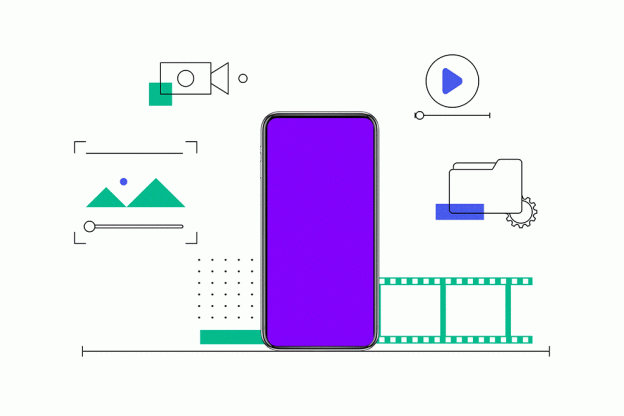 Websites and apps have embraced the use of dynamic animated visuals to create immersive and engaging user experiences. Motion graphics play a crucial role in enhancing the overall design and functionality of these digital platforms. By incorporating motion graphics, websites and apps are able to capture the attention of users and provide them with a visually stimulating experience.
Websites and apps have embraced the use of dynamic animated visuals to create immersive and engaging user experiences. Motion graphics play a crucial role in enhancing the overall design and functionality of these digital platforms. By incorporating motion graphics, websites and apps are able to capture the attention of users and provide them with a visually stimulating experience.
One way motion graphics are utilized in websites and apps is through interactive animations that respond to user actions. For example, when scrolling down a webpage, elements may animate or transition smoothly, creating a sense of fluidity and guiding the user’s focus.
Additionally, motion graphics can be used to convey information or guide users through complex processes by using animated tutorials or walkthroughs. This not only simplifies navigation but also enhances user engagement by making the experience more interactive.
Furthermore, motion graphics can be employed to showcase products or services on e-commerce websites or mobile applications. By incorporating animated visuals such as 360-degree product rotations or interactive infographics, businesses can effectively communicate their offerings and highlight key features in an engaging manner. This not only attracts potential customers but also increases conversion rates by providing a more immersive and informative shopping experience.
What Type Of Motion Graphics Suits Your Project?

Effective motion graphics serve as visual storytelling tools, seamlessly blending captivating visuals and informative content to evoke an emotional response and engage audiences.
They have the power to transform complex concepts into easily understandable narratives, making them suitable for a wide range of projects.
When choosing the type of motion graphics that best suits your project, consider the following factors:
By carefully considering these elements when creating motion graphics for your project, you can effectively captivate your audience’s attention, evoke emotion, and leave a lasting impression.
Conclusion
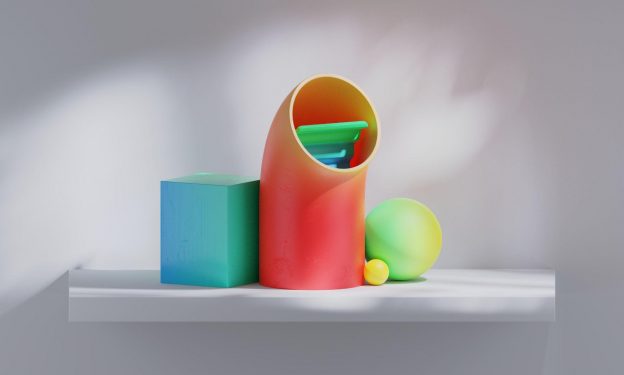
In conclusion, motion graphics have a rich history and continue to play a vital role in visual storytelling. From their origins in film credits to their widespread use in various industries today, motion graphics have evolved alongside advancements in digital technology.
With their combination of text, design elements, and movement, they captivate audiences and enhance the overall visual experience.
Moreover, motion graphics find applications in diverse fields such as advertising, social media, website design, and more.
They have become an essential tool for communicating complex ideas and concepts in a visually engaging manner. Whether it’s the sleek animations of opening credits or the immersive 3D visuals created for websites and apps, motion graphics offer endless possibilities for creativity.
When considering which type of motion graphics suits your project, it is crucial to understand its specific requirements and goals.
Different techniques like typography-based animations or 3D visuals offer unique advantages depending on the desired outcome. By carefully selecting the appropriate style of motion graphics, one can effectively convey information while adding a touch of elegance to their visual presentation.
Frequently Asked Questions
How have motion graphics evolved over time and what industries are they commonly used in?
Over time, motion graphics have evolved from simple film credits to dynamic and visually captivating animations. They are commonly used in industries such as film, advertising, news broadcasting, social media, website design, and retail experiences.
Who were some influential pioneers in the history of motion graphics?
Influential pioneers in the history of motion graphics include Saul Bass and Elaine Bass, who revolutionized the field with their creative and colorful designs. Their work paved the way for digital advancements and expanded the creative possibilities in motion graphics design.
How has digital technology impacted the design and accessibility of motion graphics?
Digital technology has revolutionized the design and accessibility of motion graphics. Advancements in software like Adobe Premiere and After Effects have expanded creative possibilities, making it easier for designers to create engaging and visually stunning animations.
What are some notable examples of motion graphics in film, TV, and advertising?
Notable examples of motion graphics in film, TV, and advertising include Saul Bass’ iconic opening credits for ‘The Seven Year Itch,’ the map-based intro for ‘Game of Thrones,’ and ‘The ABC of Architects’ animation exploring architecture’s history through motion graphics.
How have motion graphics been used to enhance infographics and digital advertising?
Motion graphics have been used to enhance infographics and digital advertising by adding visual appeal and interactivity. They can simplify complex data, convey information in a concise manner, and engage viewers through dynamic animations and transitions.
